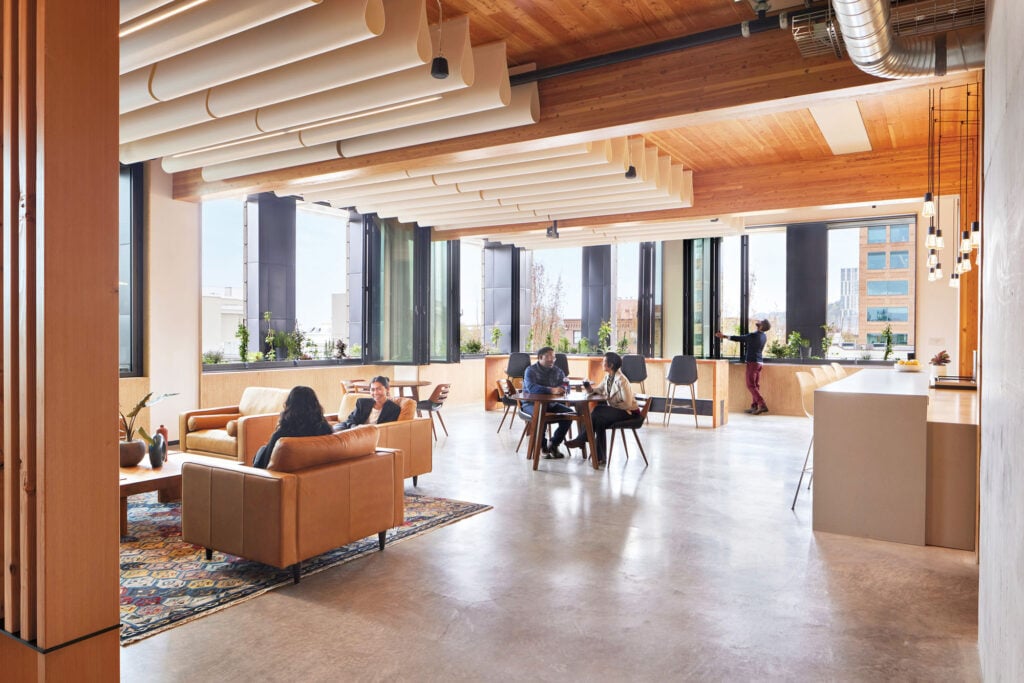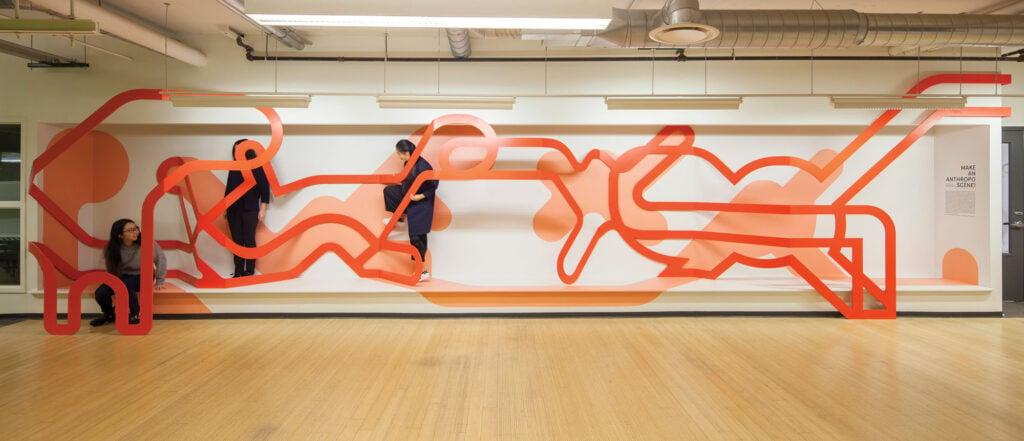
December 1, 2022
Practicing “Architectural Disobedience” with Verdical Group CEO Drew Shula
Metropolis Magazine: Why did you start Verdical Group?
Drew Shula: Verdical Group was founded as an act of “architectural disobedience” to coin a term here. What I mean by that is, architectural design and building construction with an ultra-focus on sustainability and carbon reduction. It’s using buildings to help solve the climate crisis, but what’s needed is a radical break from the status quo of conventional repetitive building practices. With Verdical Group, I set out to challenge assumptions and use first principle thinking to arrive at the most sustainable buildings possible. As every industry focuses on decarbonization, the building industry—which accounts for 40 percent of global carbon emissions— is a massive piece of the problem, and therefore of the solution.
“Architectural disobedience” is akin to “civil disobedience” before it. Henry David Thoreau popularized the term more than 170 years ago in his 1849 essay “Resistance to Civil Government”. Citizens refuse to comply with the status quo as a form of peaceful political protest. Civil disobedience has been used successfully to create change by leaders including Susan B. Anthony of us U.S. women’s suffrage movement in the late 1800’s, Mahatma Gandhi in the 1920’s during India’s protest for independence from Britain, and by Martin Luther King Jr. during the U.S. civil rights movement in the 1960’s. It’s time for architectural designers and builders around the world to collectively practice architectural disobedience if we’re going to have a shot at transforming the building industry fast enough to limit global warming to 1.5 degrees Celsius.

MM: What role does Verdical Group play in decarbonizing the built environment?
DS: At a services level it’s energy modeling to reduce operational carbon, and life cycle assessments (LCA’s) to reduce embodied carbon, but my goal when I first opened up my laptop on day one of Verdical Group in my Pasadena, California, garage was to ask a lot of questions about how we could make things better, and that remains our team’s focus a decade later even as we’ve grown from just me to a team of 20. The building industry is incredibly repetitive. Maybe for good reason as it’s architect’s responsibility to “protect the health, safety, and welfare of the public,” so it’s easiest to do things how they’ve been proven to work in the past: safe and free of risk. Put it on repeat. But this mindset is the opposite of what we need to solve the climate crisis. We need all the new ideas, products, and innovation on the table so we can work within our budget and schedule to arrive at the most sustainable and lowest carbon projects possible. One of the most effective tools to arrive at decarbonized projects is simply being good at asking questions. That’s primarily what Verdical Group is here to do. We challenge assumptions on why things are done the way they are and ask if they can be done a better way. Practicing architectural disobedience is an act of questioning the status quo. Asking astute questions about why we can’t do things a different better way is enormously powerful and transformative.
MM: You work on both sides of the design process, helping clients commission buildings and helping designers pursue climate certifications, do energy modeling, and more. What should designers know before undertaking a green building project, what about their clients?
DS: I have four recommendations:
1. Shoot for the stars and land on the moon. You have to set sustainability and decarbonization goals as high as possible at the start of the project and then bring them down as necessary as you move forward. It never works in reverse, and you’ll always end up with the highest performing possible project if you take this approach.
2. Focus on architectural disobedience from day one of the project. The earlier you start the better the project will be. The longer you wait, the less and less will be possible. Due to the cut and paste nature of today’s building industry, you don’t just end up with a net positive project—it’s imperative to set goals early and work toward them. If your goal is to run a marathon, you wouldn’t just sign up for a race and run it and expect to be successful, you train regularly for months in order to achieve your goal. Sustainability needs to be a primary design thinking lens along with aesthetics and cost throughout the entire duration of the project
3. Keep it simple. Sustainability terminology is grossly overcomplicated. Focus on your goal, always ask team members to simplify and focus on sustainability intent like carbon reduction to guide decision making.
4. Third-party certification works. LEED, Fitwel, WELL, Living Building Challenge, Envision, and other programs require a third party review the design and construction team’s work. You can’t cut corners and there’s no gray area. The processes forces achievement and doesn’t allow goals to fall off the table or fall victim to cost cutting or value engineering.

MM: What’s a common misconception about undertaking such a project, from either side?
DS: Cost. Designing and building low carbon and sustainability buildings does not need to cost more. If you start early, there are many no-cost and low-cost decisions you can bake into the DNA of your project that will greatly increase the sustainability and decarb goals. Invest in the time necessary to be thoughtful about design decisions to make the best project possible.
MM: How do you see the building sector changing in response to the climate crisis?
DS: This is massive. We’re in the middle of a global energy transition out of fossil fuels (natural gas, coal, and oil) to renewable energy (solar, wind, hydro, biomass, and geothermal). This transition will reduce carbon emissions to achieve our decarbonization goals to help solve the climate crisis. We need natural gas to be eliminated from buildings as quickly as possible so we can electrify everything. The electricity grid will soon be powered by green energy from renewable sources. Nearly 70 cities in California have already enacted, or are soon to enact, natural gas bans in new construction, including the major market cities of Los Angeles and San Francisco. This is huge. Massive changes are happening incredibly fast. It’s really exciting. Government policy is the most effective way to make change happen. Every project should have solar and be built to resiliently withstand future climate change impacts like wildfires, floods, and hurricanes.
MM: How has Verdical Group been able to set an example for other companies looking to have a more positive environmental impact?
DS: We use our company as a force for good and try to lead by example everywhere we can. We work to live by our principles and be the change we want to see in the world. We published our first Verdical Group “Social & Environmental Impact Report” last year in 2021. It’s an ESG report that follows all aspects of our B Corp certification and shares our positive impact on people and the environment. A few highlights include:
1. Net positive operations. We calculated our carbon footprint including scope 1, scope 2, and scope 3 emissions and bought carbon offsets for our footprint, plus an additional 10 percent to achieve net-positive performance. While many companies are making 2050, 2040, or 2030 commitments today, we achieved this in 2021. Your company can probably do this now as well. It’s a lot easier and less costly than you might think. Reach out to us if you need help.
2. We committed to not accepting money or working with companies that receive the majority of their revenue from the fossil fuel industry.
3. We divested our firm’s investment account. We sold all mutual funds that had fossil fuel, tobacco, prison and firearm stocks within them, and purchased ESG and sustainability-focused mutual funds instead.
If all of us come together around architectural disobedience, we’d make a radically better world so much faster than we are today. I hope architects and AEC professionals everywhere are down to start asking their project teams tough questions and use their voice as a force for good. We have a lot of work to do.
Would you like to comment on this article? Send your thoughts to: [email protected]
Latest
Projects
5 Buildings that Pushed Sustainable Design Forward in 2022
These schools and office buildings raised the bar for low-carbon design, employing strategies such as mass-timber construction, passive ventilation, and onsite renewable energy generation.
Projects
The Royal Park Canvas Hotel Pushes the Limits of Mass Timber
Mitsubishi Jisho Design has introduced a hybrid concrete and timber hotel to downtown Hokkaido.
Profiles
Meet the 4 New Design Talents Who Made a Mark This Year
From product design to landscape architecture and everything in between, these were the up-and-coming design practices making a splash in 2022.




